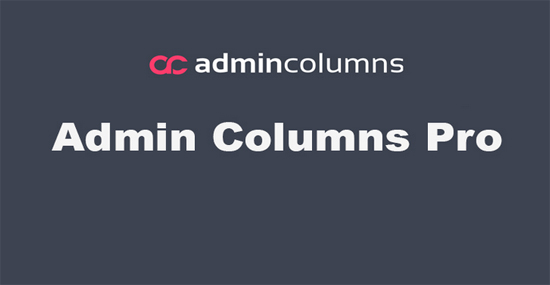Admin Columns – WordPress can do basically anything and is very versatile, but some of its features may need improvement if you want to achieve something. In this tutorial, we’ll show you how to add a new WordPress admin column to allow managers to view and manipulate post data.
In addition to showing you how to add more admin columns , we also want to address the fact that you may not even need these custom columns . This is why this article is divided into three parts. In the first one, we’ll discuss why and when you need to add a new admin column to your WordPress site. Second, why and when you might not want or need it. However, if you’re sure you really need it, you can go straight to the third part.
Why Add New WordPress Admin Columns
The admin column provides useful information for administrators who need to run a website more efficiently, or even not at all. Default WordPress settings assume a certain number of admin columns and information about pages, posts, etc. Most of these are basic but sufficient: title, author, taxonomy (categories and tags) and date of publication or date of last draft.
However, depending on the type of service or product you offer through your website, you may want or need to add more information to the back end of your website for the benefit of your administrators. And, if your administrators are faster and more efficient, your visitors will feel the benefits.
Maybe it’s important for your website to stick to a certain publishing schedule. In this case, your employees may need to know the time and date of each post. Maybe you have a specific way of assigning featured images to posts, and you want your admins to see their thumbnails on the posts screen. Maybe your copy editor needs word counts so they can organize their tasks more efficiently.
Your administrators and other employees should have the information they need at a glance, and setting up additional columns for important information is a very labor-saving way.
Related items:
When not to add new WordPress admin columns
You can use an admin column to include a lot of other information into your website’s backend tables, but make sure your admin really needs it. You can end up cluttering their workspace with information they don’t often or at all need, or information they can easily find elsewhere.
You may find yourself tempted to fill the admin space with more columns, but if they don’t improve the performance of your admin and your website, why bother? In some cases, the extra columns may be useful or even necessary, while in other cases they may just be meaningless noise that has no practical use for your employees.
Remember, more is not always better. In the case of information, sifting can be more cumbersome.
How to Add New WordPress Admin Columns Using Plugins
Typically, if a feature isn’t available through WordPress’ core, it’s available through a plugin.
After installing and activating the plugin, navigate to the Settings/Admin column on your WordPress dashboard.

You will be taken to the main settings screen of the Admin Columns plugin. There, you can select the item type for which you want to edit the column in the drop-down menu. By dragging the dotted portion of each column on the left, you can change the order of the current column.

By clicking the down arrow for each item, you can edit each column: you can change the type, label and width of the column , or delete the column entirely.
You can add new columns by clicking the Add Column button at the bottom of the column list.
Now, let’s say you need to let your admins know the date each post was published. From the Type menu, select Release Date
In the Label field, the suggested label is Date Published. By default it will always match the selected type. You can change it if you want, but it’s best to keep it intuitive and simple, so we’ll keep it. Next, you can set the width of the date column, in percentages or pixels. In the ” Date Format ” section, you can choose your preferred date format, and even choose a time difference (for example, five days ago instead of any specific date).
Finally, on the bottom row, you can close the panel, clone the column, or delete it. If you wish to display the date and time difference for each post, you can click on clone and adjust the data (in this case, the label and date format ).
The exact options available for each column you add will vary depending on the type of column you add , but you get the point. Enter all relevant data and click the Save or Update button when done.
Download Admin Columns Pro WordPress Plugin from the link below
I recommend downloading from the sites below, because there is a money back guarantee. All wordpress items are clean and safe. Scanned with Anti-virus before uploading.Related items:

